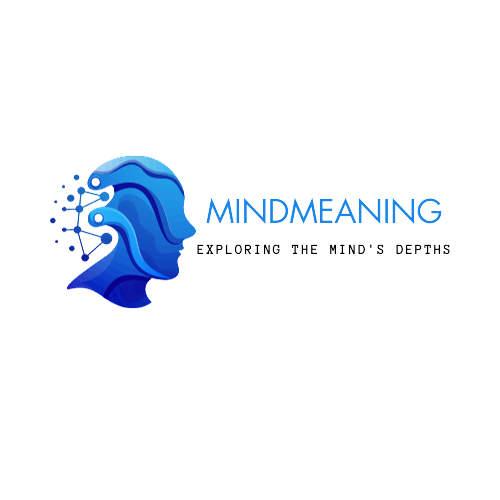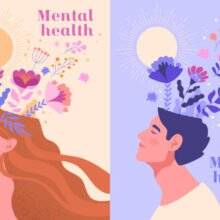It’s Post-Traumatic Stress Disorder with these Symptoms
Post-traumatic stress disorder (PTSD) is a mental health condition that can occur in individuals who have experienced or witnessed a traumatic event. The traumatic event could be a natural disaster, physical or sexual assault, war, accidents, or any other event that causes intense fear, helplessness, or horror. PTSD can affect people of all ages, races, and backgrounds, and it can develop at any time after the traumatic event.
It is crucial to recognize the symptoms of PTSD because they can significantly impact an individual’s quality of life, relationships, and overall well-being. Untreated PTSD can lead to depression, substance abuse, and other mental health problems. It can also affect an individual’s ability to function in their daily life, such as going to work or school, taking care of their family, or maintaining social relationships.
PTSD symptoms can vary in severity and duration, and they may not always appear immediately after the traumatic event. Therefore, it is important to understand the definition of PTSD and the signs and symptoms associated with it, so that individuals can recognize when they or someone they know may be experiencing the condition. This article will provide an overview of PTSD, including its definition and the importance of recognizing its symptoms. It will also offer practical tips for managing the symptoms of PTSD and living a fulfilling life.
I. What is Post-Traumatic Stress Disorder (PTSD)?
PTSD is a mental health condition that can develop after an individual experiences or witnesses a traumatic event. Traumatic events that can trigger PTSD include military combat, physical or sexual assault, natural disasters, serious accidents, or the sudden death of a loved one. While it is normal to experience stress and anxiety after a traumatic event, PTSD is characterized by symptoms that persist for more than a month and interfere with an individual’s ability to function in their daily life.
Causes of PTSD
The exact causes of PTSD are not fully understood, but research suggests that the condition can be caused by a combination of genetic, environmental, and personal factors. For example, individuals who have a history of trauma or a family history of mental illness may be at higher risk of developing PTSD. Additionally, individuals who lack a strong support system, experience ongoing stress, or have a history of substance abuse may also be at increased risk of developing PTSD.
How PTSD affects the brain
PTSD can have a significant impact on the brain, causing changes in the way the brain processes and responds to stressful situations. The condition can lead to an overactive amygdala, which is the part of the brain responsible for processing emotions such as fear and anxiety. This can result in individuals experiencing exaggerated emotional responses to certain triggers or stimuli, even if the trigger is not directly related to the traumatic event.
Who is at risk for developing PTSD?
Anyone who has experienced or witnessed a traumatic event can develop PTSD, regardless of age, gender, or background. However, some individuals may be at higher risk of developing the condition. These include individuals who have experienced multiple traumatic events, individuals with a history of mental illness, individuals who lack social support, and individuals who have a family history of PTSD or other mental health conditions. Additionally, individuals who have a history of substance abuse may be at higher risk of developing PTSD, as substance abuse can increase the likelihood of experiencing trauma.
II. Causes of Post-Traumatic Stress Disorder
- Trauma and stressors: PTSD is often triggered by exposure to a traumatic event or series of events, such as a natural disaster, sexual or physical assault, combat, or a serious accident. The severity of the trauma, how long it lasted, and how it was experienced can all affect the likelihood of developing PTSD.
- Risk factors for developing PTSD: Some people are more likely to develop PTSD than others, including those who have a history of mental illness, those who have a family history of mental illness, those who experienced trauma at a young age, and those who lack social support.
- The role of genetics and brain function: While the causes of PTSD are not yet fully understood, research suggests that genetics and brain function may play a role in how individuals respond to trauma.
III.Treatment and Management of Post-Traumatic Stress Disorder
- Psychotherapy options, such as Cognitive Behavioral Therapy (CBT) and Eye Movement Desensitization and Reprocessing (EMDR): These therapies help individuals process and reframe their traumatic experiences, develop coping skills, and reduce symptoms of PTSD.
- Medications for managing symptoms, including antidepressants and anti-anxiety medications: Medications can be effective in reducing symptoms of PTSD, but should be used in conjunction with therapy and under the supervision of a qualified mental health professional.
- Alternative therapies, such as meditation and yoga: These practices can help individuals manage stress and anxiety, improve sleep, and reduce symptoms of PTSD.
- Self-care strategies for managing symptoms, including exercise, healthy eating, and getting enough sleep: These strategies can help individuals reduce stress, improve their mood, and manage symptoms of PTSD.
IV. Seeking Help for Post-Traumatic Stress Disorder
- Barriers to seeking help: Many individuals with PTSD face barriers to seeking help, such as stigma, lack of access to mental health services, and fear of judgement or retaliation.
- How to find a qualified mental health professional: It’s important to find a mental health professional who is experienced in treating PTSD and who you feel comfortable working with. This may involve asking for referrals from your primary care physician, contacting your insurance provider for a list of covered providers, or searching online directories of mental health professionals.
- What to expect during the treatment process: The treatment process for PTSD can vary depending on the individual and the severity of their symptoms. However, it typically involves a combination of therapy, medication, and self-care strategies.
V. Coping with Post-Traumatic Stress Disorder
- Strategies for managing triggers and flashbacks: Triggers and flashbacks can be overwhelming and distressing for individuals with PTSD. It’s important to develop coping strategies for managing these experiences, such as deep breathing, mindfulness exercises, and grounding techniques.
- Coping techniques for managing anxiety and depression: Many individuals with PTSD also experience symptoms of anxiety and depression. Coping techniques for managing these symptoms may include therapy, medication, and self-care strategies such as exercise and relaxation techniques.
- Building a support system of family and friends: Having a supportive network of family and friends can be instrumental in coping with PTSD. It’s important to communicate openly with loved ones about your experiences and needs, and to seek support when needed.
VI. Conclusion
- Post-Traumatic Stress Disorder can be a debilitating condition, but it’s important to remember that effective treatments are available. Seeking help is a sign of strength, and can lead to a better quality of life for those struggling with PTSD. By developing coping strategies, seeking professional help, and building a supportive network of family and friends, individuals with PTSD can take steps toward recovery.
Here are some reputable organizations that provide information and support relating to post-traumatic stress disorder:
- National Center for PTSD: https://www.ptsd.va.gov/
- Anxiety and Depression Association of America: https://adaa.org/understanding-anxiety/posttraumatic-stress-disorder-ptsd
- American Psychiatric Association: https://www.psychiatry.org/patients-families/ptsd/what-is-ptsd
- National Institute of Mental Health: https://www.nimh.nih.gov/health/topics/post-traumatic-stress-disorder-ptsd/index.shtml
- PTSD United: https://www.ptsdunited.org/ptsd-resources/what-is-ptsd/
- Sidran Institute: https://www.sidran.org/resources/understanding-ptsd/what-is-posttraumatic-stress-disorder-ptsd/
- PTSD Alliance: http://www.ptsdalliance.org/what-is-ptsd/
- Trauma Recovery Network: https://www.traumarecoverynetwork.com/ptsd-resources
- Give an Hour: https://giveanhour.org/get-help/ptsd-resources/
- The American Psychological Association: https://www.apa.org/topics/trauma-ptsd







